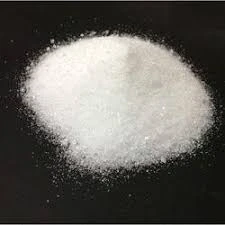The Role of Cellulose and HPMC in Paint Formulations
In the world of coatings and paints, the quest for improved performance and sustainability has reignited interest in natural polymers, particularly cellulose and its derivatives such as Hydroxypropyl Methylcellulose (HPMC). These materials play a crucial role in enhancing the properties of paint formulations, making them more effective and environmentally friendly.
Understanding Cellulose and HPMC
Cellulose is the most abundant organic polymer on Earth, primarily sourced from plant cell walls. It consists of long chains of glucose units, providing structural support to plants. When modified, cellulose can serve various industrial purposes. Hydroxypropyl Methylcellulose (HPMC) is a semi-synthetic derivative of cellulose, created through the chemical modification process. HPMC combines the beneficial properties of cellulose, like viscosity and film-forming capabilities, with enhanced solubility in water and other solvents.
Benefits of Incorporating Cellulose and HPMC in Paints
1. Viscosity Control One of the primary roles of HPMC in paint formulations is its ability to control viscosity. It acts as a thickening agent, helping to achieve the desired consistency without compromising the flow properties of the paint. This is crucial for ensuring that the paint can be easily applied, whether by brush, roller, or spray.
2. Stability Paints often contain various pigments and additives that may separate over time. The inclusion of cellulose and HPMC helps to stabilize these formulations. By increasing the viscosity of the paint, these agents can prevent settling and separation, ensuring a uniform distribution of color.
3. Improved Adhesion HPMC contributes to the adherence of paint to surfaces. The presence of this polymer enhances the bonding between the paint and the substrate, resulting in a robust and long-lasting finish. This characteristic is particularly beneficial for exterior paints, which need to withstand varying environmental conditions.
cellulose hpmc for paint

4. Water Retention HPMC is known for its water-retaining properties. In paint, this quality ensures that the paint remains workable for more extended periods during application. It also aids in the curing process, allowing the film to dry evenly, minimizing defects such as cracking or peeling.
5. Eco-Friendly Option As industries move towards more sustainable practices, the use of cellulose and HPMC aligns perfectly with this trend. Both materials are derived from renewable resources, making them an eco-friendly choice compared to synthetic polymers that can be harmful to the environment. Further, paints formulated with cellulose and HPMC often emit fewer volatile organic compounds (VOCs), which contribute to air pollution and health issues.
Applications and Market Trends
The application of cellulose and HPMC in the paint and coatings industry is broad. They are particularly favored in water-based paints, which are becoming increasingly popular due to environmental regulations and consumer demand for safer products. As the market for eco-friendly paints continues to expand, cellulose-based additives are witnessing a surge in demand.
Moreover, continuous innovations in the formulations of HPMC are making it possible to create specialized products catering to diverse applications, from decorative paints to industrial coatings. This adaptability ensures that cellulose derivatives can meet the evolving needs of the market.
Conclusion
In conclusion, the incorporation of cellulose and Hydroxypropyl Methylcellulose in paint formulations presents numerous advantages that enhance product performance while promoting environmental sustainability. As the industry shifts towards greener solutions, these natural polymers will likely play an increasingly vital role. Their ability to improve viscosity, stability, adhesion, and water retention makes them indispensable in the formulation of modern paints, aligning with both consumer preferences and regulatory demands.
-
Rdp Powder: Key Considerations for Wholesalers in the Building Materials IndustryNewsJul.08,2025
-
Key Considerations for Wholesalers: Navigating the World of Hpmc - Based ProductsNewsJul.08,2025
-
Hpmc Detergent: Key Considerations for WholesalersNewsJul.08,2025
-
Key Considerations for Wholesalers: China Hpmc For Tile Adhesive, Coating Additives, Concrete Additives, and MoreNewsJul.08,2025
-
Crucial Considerations for Wholesalers: Navigating the World of Construction MaterialsNewsJul.08,2025
-
Key Considerations for Wholesalers Sourcing Additive For Cement, Additive For Concrete, Additive For Putty from Additive Manufacturer Shijiazhuang Gaocheng District Yongfeng Cellulose Co., Ltd.NewsJul.08,2025




